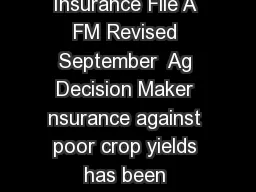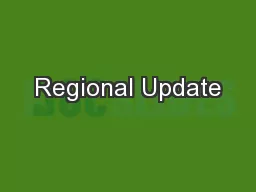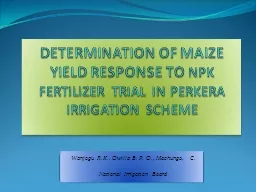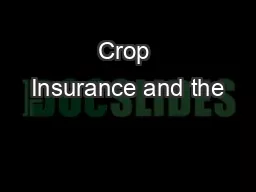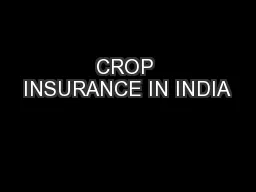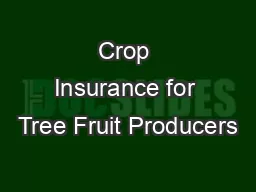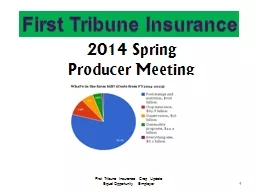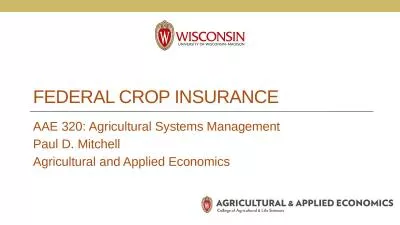PDF-Revenue Protection Crop Insurance File A FM Revised September Ag Decision Maker nsurance
Author : calandra-battersby | Published Date : 2014-11-08
However income from crop production can be low even when yields are not A risk management tool known as Revenue Protection RP insurance addresses this problem Revenue
Presentation Embed Code
Download Presentation
Download Presentation The PPT/PDF document "Revenue Protection Crop Insurance File A..." is the property of its rightful owner. Permission is granted to download and print the materials on this website for personal, non-commercial use only, and to display it on your personal computer provided you do not modify the materials and that you retain all copyright notices contained in the materials. By downloading content from our website, you accept the terms of this agreement.
Revenue Protection Crop Insurance File A FM Revised September Ag Decision Maker nsurance: Transcript
Download Rules Of Document
"Revenue Protection Crop Insurance File A FM Revised September Ag Decision Maker nsurance"The content belongs to its owner. You may download and print it for personal use, without modification, and keep all copyright notices. By downloading, you agree to these terms.
Related Documents

